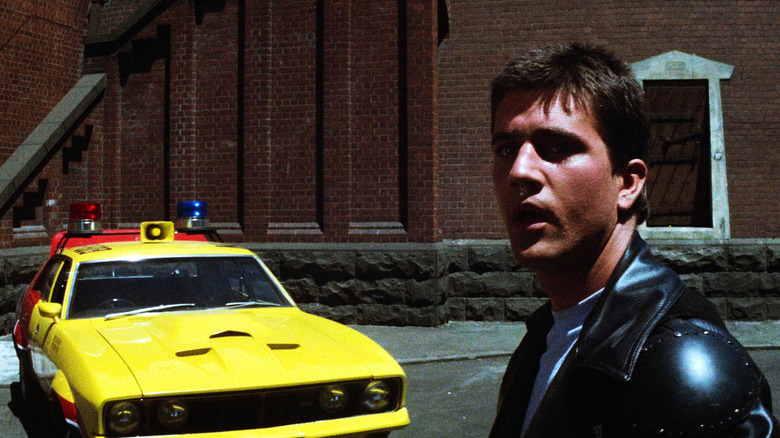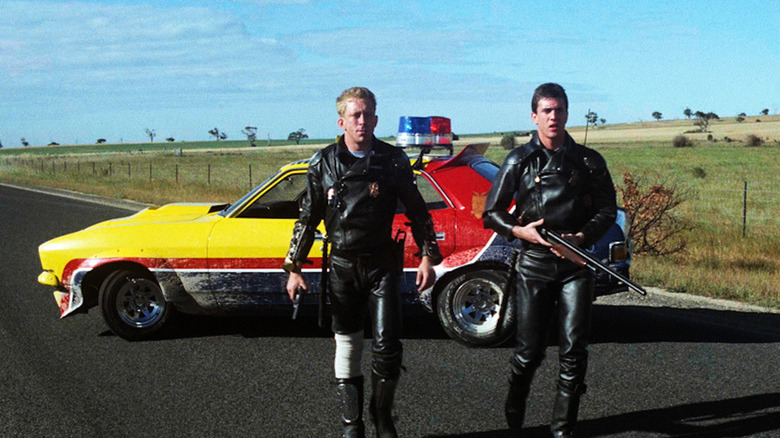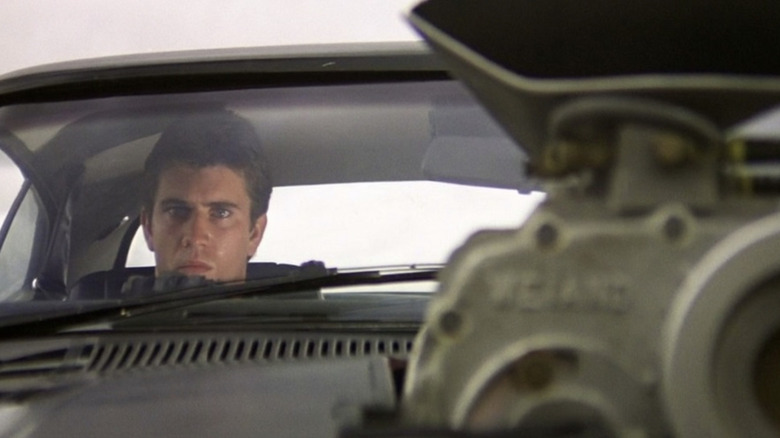The Making Of Mad Max Wouldn't Have Happened Without A Little Lawbreaking
George Miller's "Mad Max" was a wild undertaking. The dystopian action flick, which envisioned an Australia verging on lawlessness due to a worldwide oil shortage, became a box office sensation on the strength of its calamitous, perilously practical high-speed car chases and fiery crashes. U.S. cinema was hardly lacking for such entertainment (see: "Vanishing Point," "Dirty Mary, Crazy Larry," and "Smokey and the Bandit"), but there was a breakneck, open-road fury to Miller's film that set it apart from its stateside counterparts.
Set safety regulations were not quite what they are today in the 1970s (take, for instance, Gerrit Graham backing into the path of a speeding auto in "Used Cars"); in fact, they were practically non-existent in Australia. Though the country's cinema was in the midst of a "New Wave" of its own as the 1980s approached, the films being made by Peter Weir, Gillian Armstrong, and Bruce Beresford were atmospheric dramas that asked viewers to soak in the eerie beauty of the land down under. They were not stunt-heavy affairs. "Mad Max" was, and, to get the footage he needed, Miller set the country's industry standard for how car chases were filmed.
Hard driving without a permit
In an interview with the National Film and Sound Archive of Australia, George Miller (who was making his feature-directing debut) shared his free-wheeling experience on the set of "Mad Max":
"In those days [filming the original 'Mad Max'] [...] there was a legal twilight zone. I mean, there's nothing in the law to give you permission to go and drive a car and smash it in the street, I mean no one had made these kind of movies at the time. So there was no one to go to really get a permit [...]"
This situation was complicated by the crew's inability to use CB radios or walkie-talkies, which, at the time, were all on police frequencies. This helped turn the shoot into a bit of a nightmare scenario (one that led Miller to briefly exit the production), but the cops, in this instance, ultimately came to the rescue.
The road to The Road Warrior
If ever a film was likely to interest a police officer, it's "Mad Max." The story of a cop driven to murderous extremes after a vicious gang murders his wife and infant son is a bleak revenge fantasy. It's crudely satisfying, and the highlight of the movie is its vehicular carnage. According to George Miller, that's also what saved the production:
"[A]s the film went on, in Melbourne, the police got so interested in the film, unofficially they'd come after hours and help us make the film. I mean, they'd block off the roads for us and whatever, because no one was making movies about these sorts of things, and particularly because there [were] futuristic kind of cop cars in it. We would often be driving these cars back to and from location and have an escort of several police on their motorbikes or police cars, just taking us down as part of a convoy."
Miller goes on to call this "guerilla filmmaking," which is true in that they were working without a map. But when I hear that term, I think of Larry Cohen filming a shooting rampage on the streets of Manhattan during the city's St. Patrick's Day festivities without a permit. Now, that's ballsy. Having the cops on your side feels like cheating. Regardless, "Mad Max" is a great pulp movie that gave us two landmark pieces of action cinema in "The Road Warrior" and "Mad Max: Fury Road." So, uh, thanks, Australian law enforcement!


